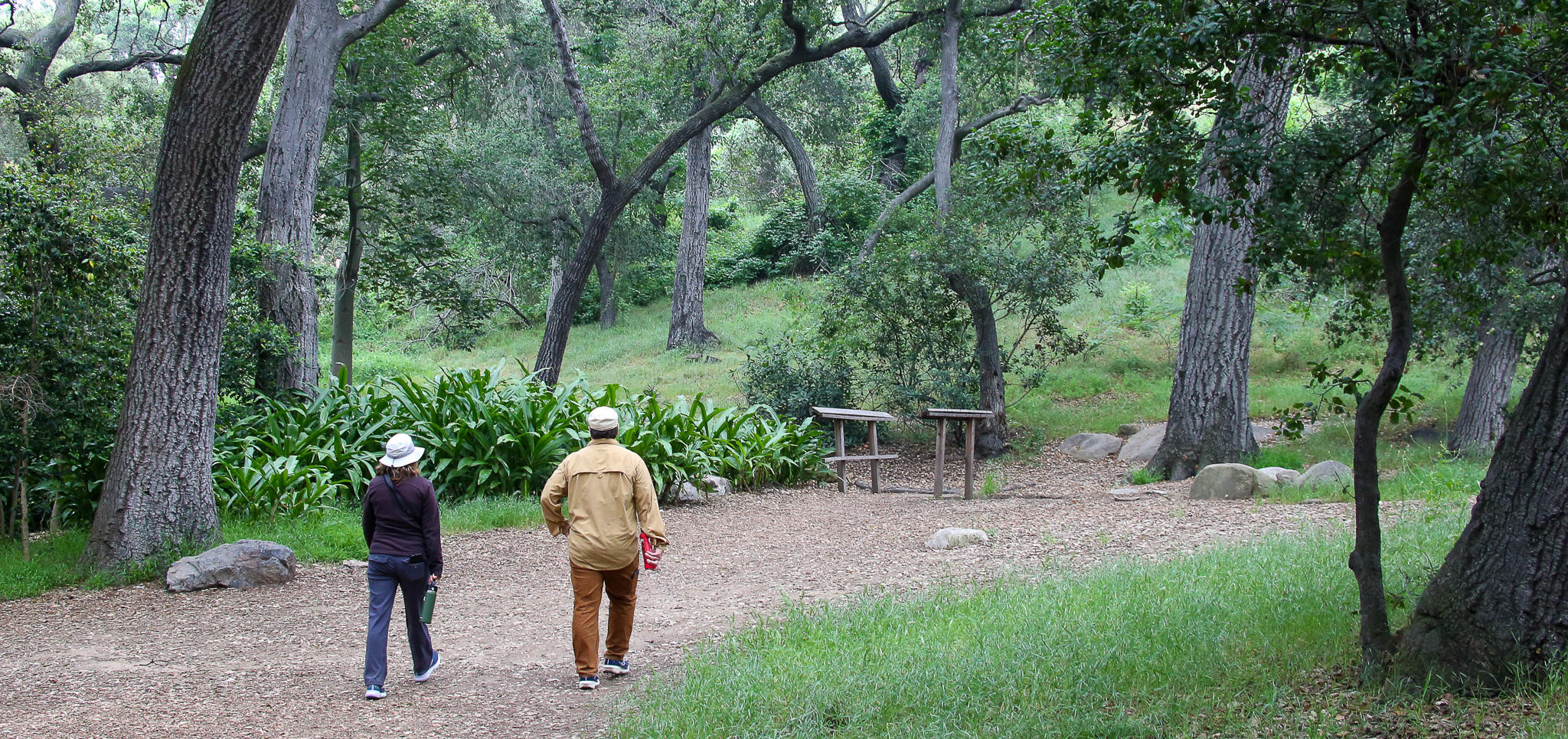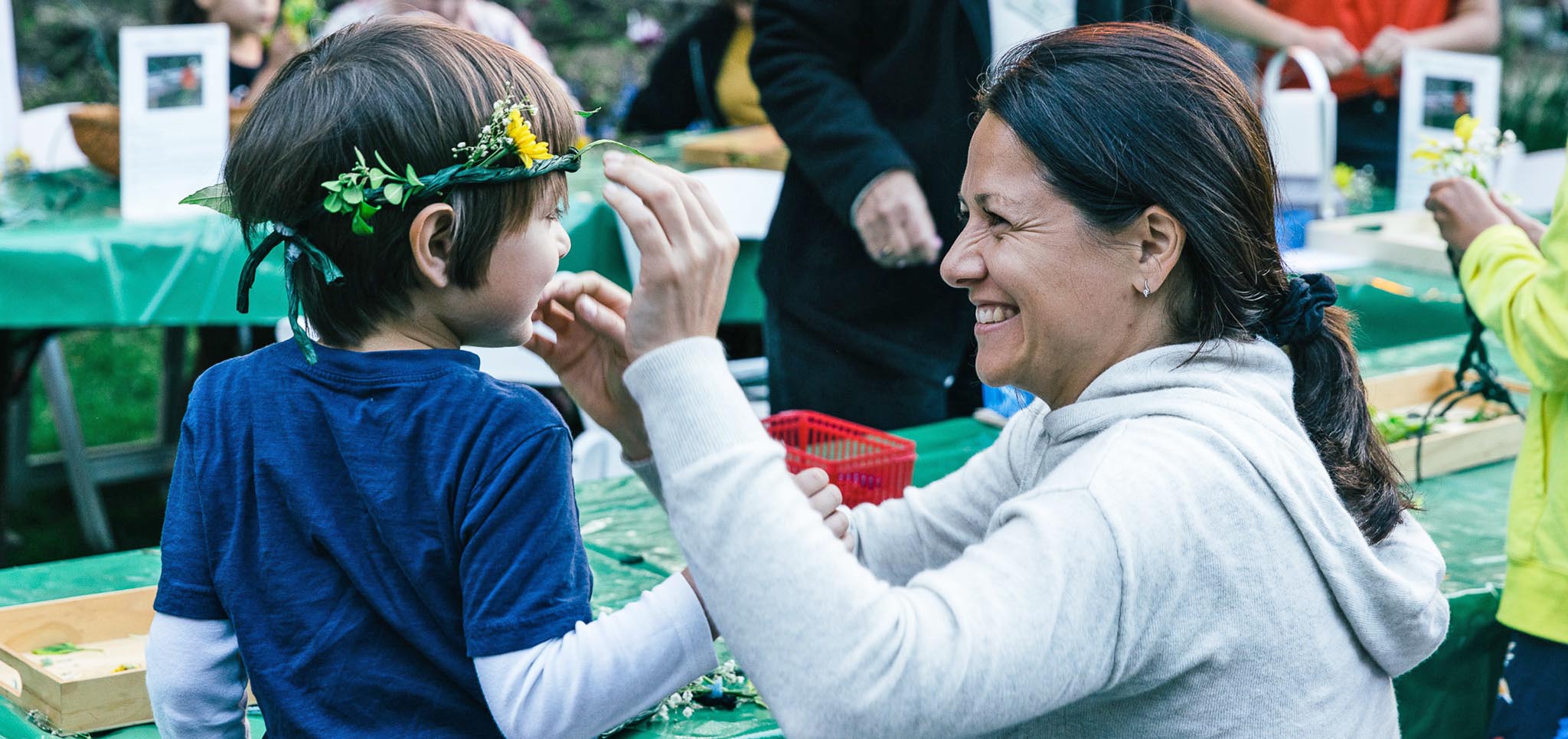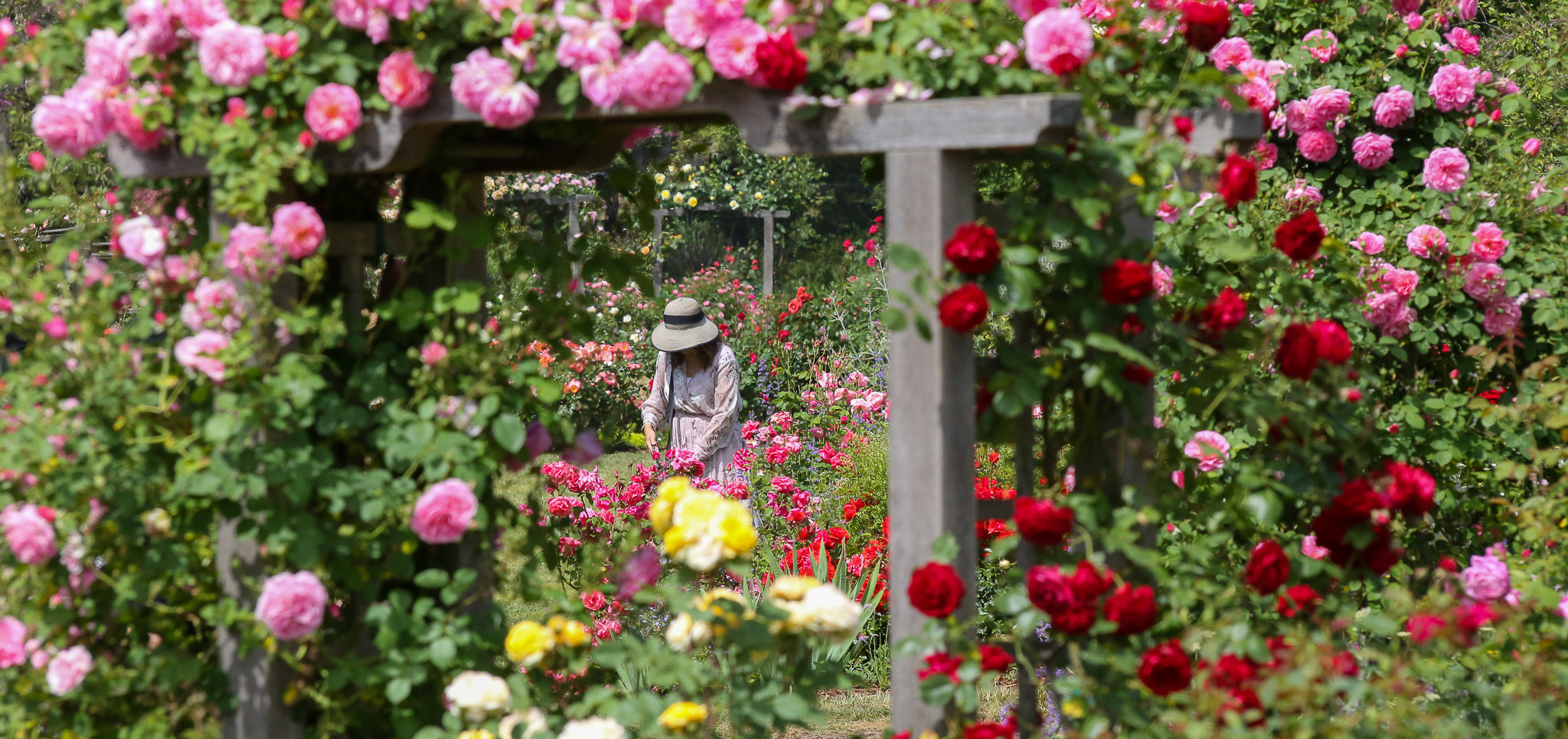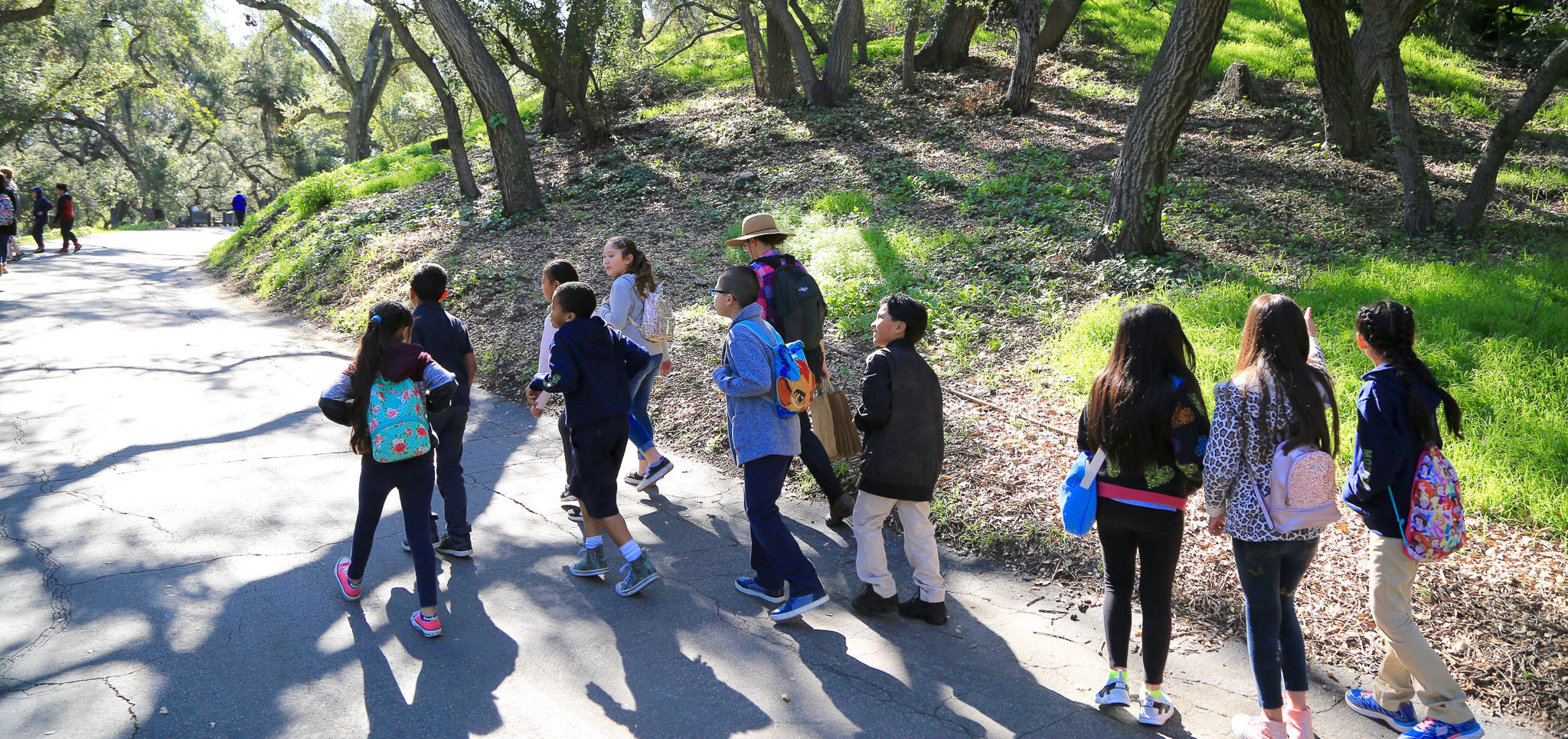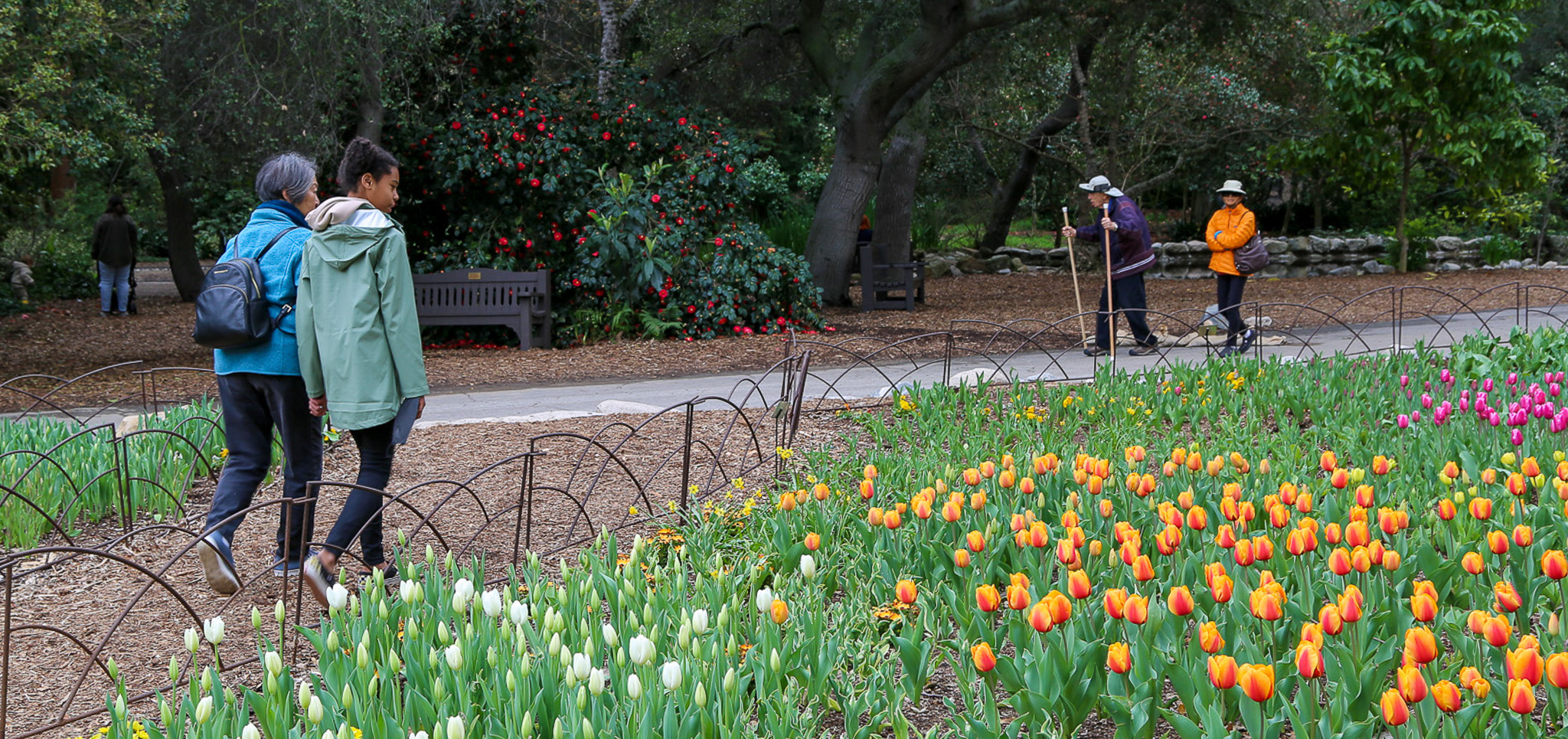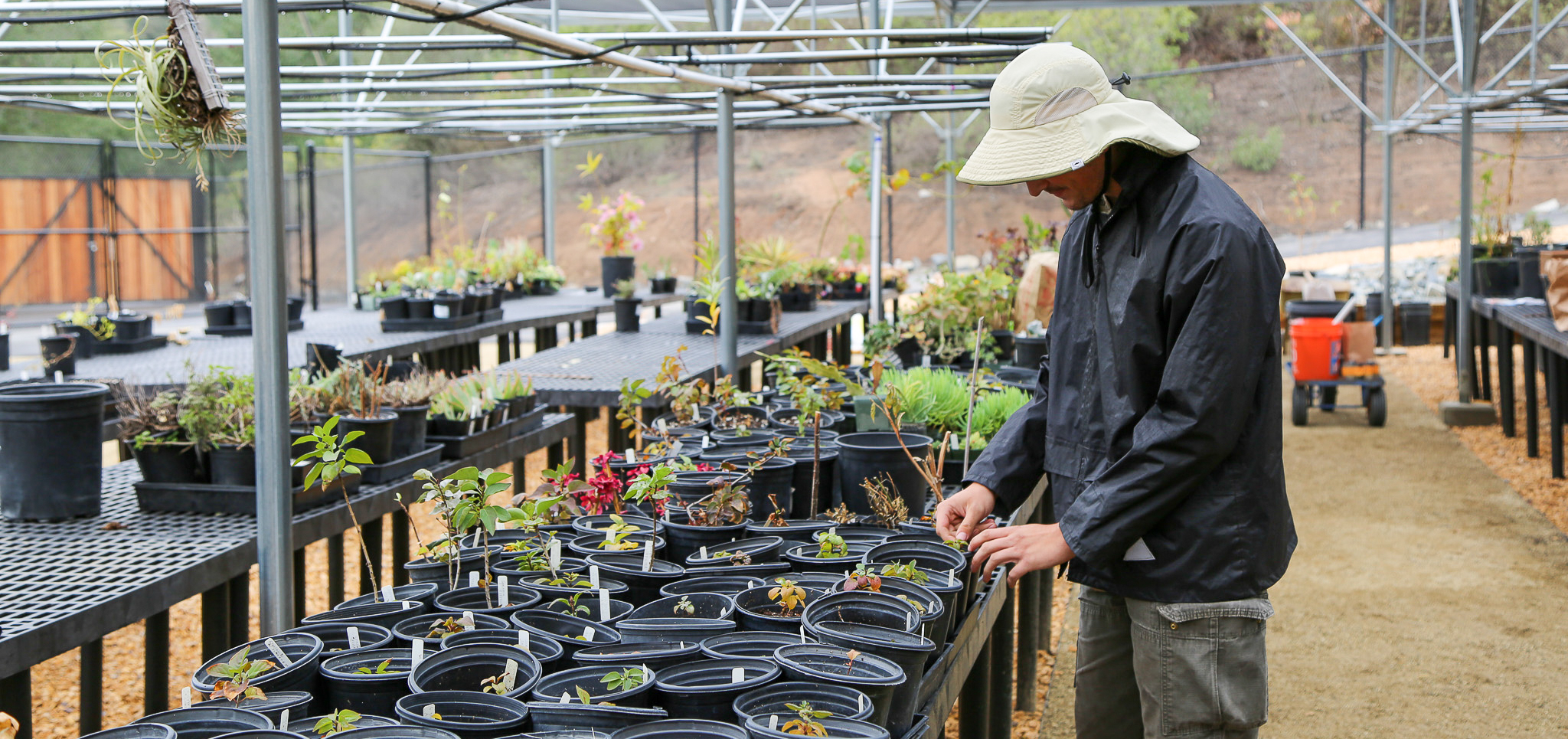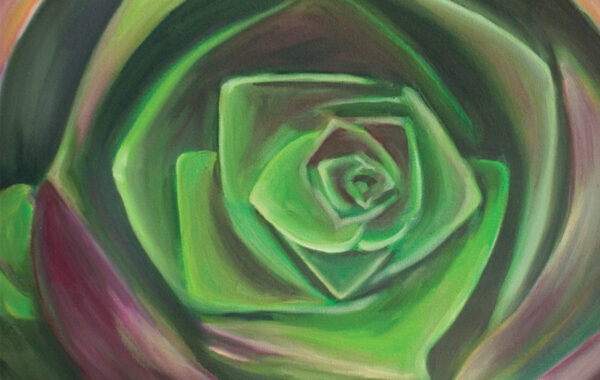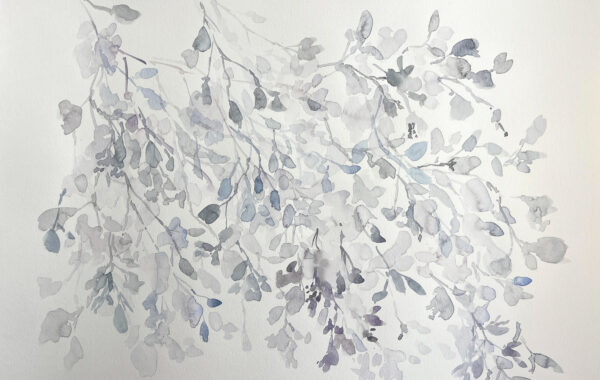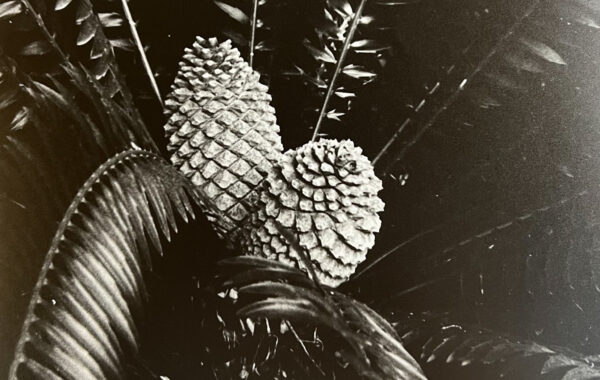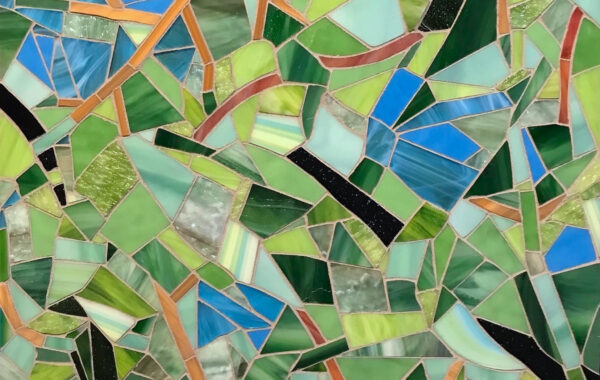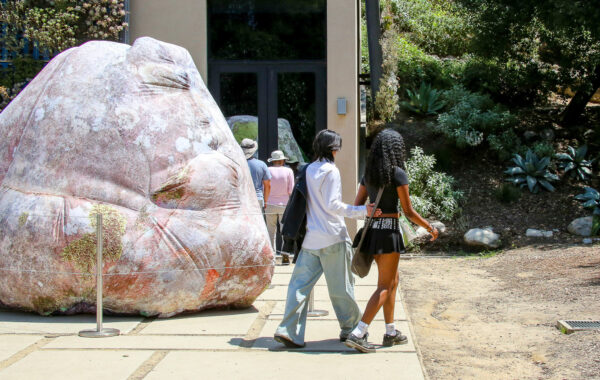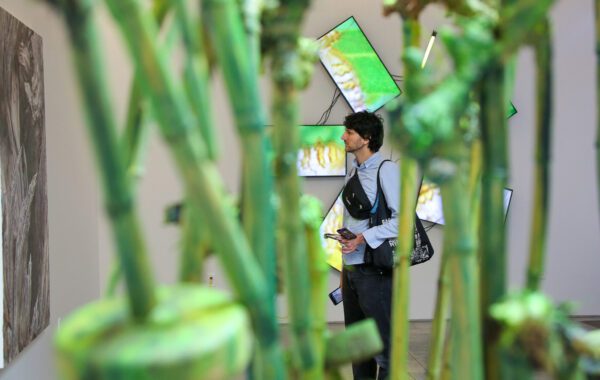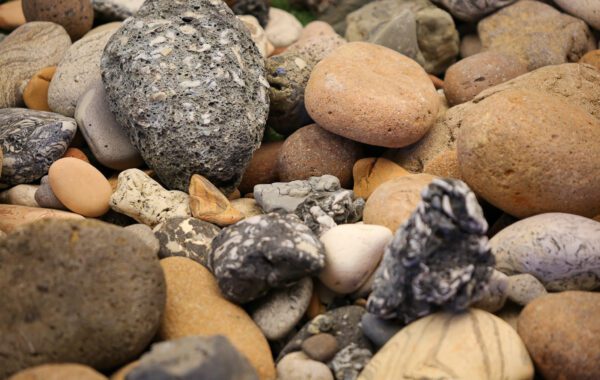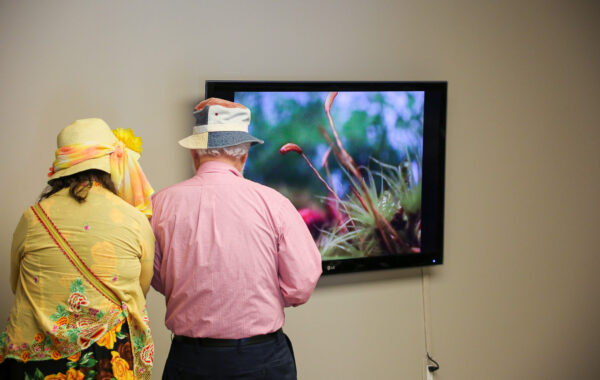Shape+Form
October 28, 2023–January 28, 2024
Shape and form are two of the basic elements of art. Using creativity, an artist can transform simple shapes and forms into a profound work of art.
The Sturt Haaga Gallery has invited artists to submit their masterpieces to Shape+Form, an open juried competition and exhibition. Approximately 200 artworks will be on view at the Sturt Haaga Gallery Oct. 28–Jan. 28.
Artists Kaz Kitajima and Luna Ikuta have also been invited to display their work as part of Shape+Form.
An exhibit by Kaz Kitajima celebrates more than 50 years in landscape design as well as his work as a Sogetsu ikebana master. Mr. Kitajima is a renowned practitioner and teacher at Ikebana Sogetsu Los Angeles. His arrangements of shape and form can be seen in Descanso Gardens during the month of October each year.
Luna Ikuta is a conceptual artist and designer whose work draws from biology, craftsmanship, and material research. Distilled Essence, her debut exhibit with the Sturt Haaga Gallery, showcases transparent botanicals that are preserved within antique decanters and custom blown-glass vessels, setting a surreal, laboratory-like ambiance.
Shape+Form is funded in part by Heather and Paul Haaga.
0 Horizon: Art of the Forest Floor
June 17–October 1, 2023
0 Horizon: Art of the Forest Floor examined a wealth of subject matter that exists in the parasitological ecosystem of the forest floor. The coexistence of the parasite and the host helps to complete life cycles in some species and the coevolution of both.
The exhibition contained all works of media that serve as a metaphor for the mutualism needed to contribute to the earth’s sustainability.
The works in the exhibition depicted nature’s underworld; a wondrous display of decay, slime, parasites, worms, beetles, mushrooms, roots, and the detritus of animals and humans.
0 Horizon: Art of the Forest Floor was funded in part by Heather and Paul Haaga.
Featured artists and curator
The curator of 0 Horizon: Art of the Forest Floor was Carole Ann Klonarides and participating artists included Andrea Bersaglieri, Travis Boyer, Sigrid Burton, Catherine Chalmers, Melinda Hurst Frye, Kristin Leachman, Adelle Lutz, Jemila MacEwan, Constance Mallinson, Brad Miller, Alexis Rockman, Diana Scherer, Sula Bermudez Silverman, Coleen Sterritt, and Diana Thater.
Living in a Wildlife Corridor
June 3-October 1, 2023
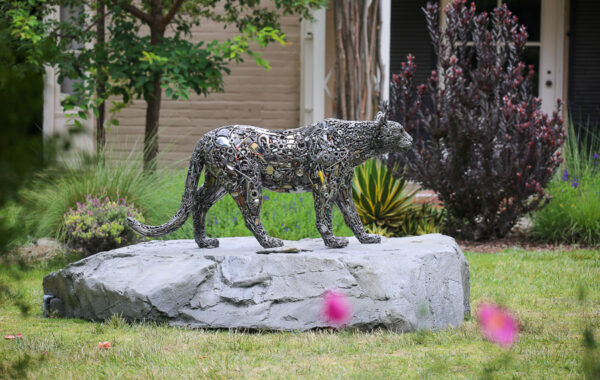
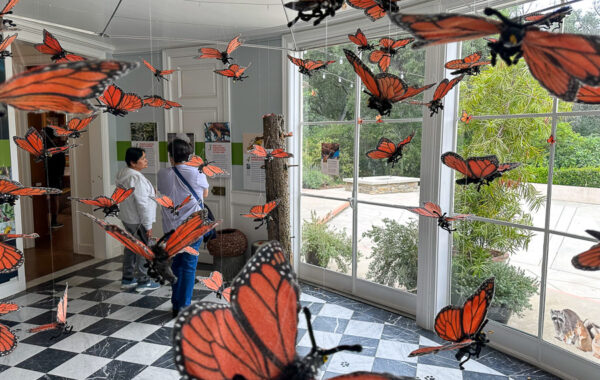
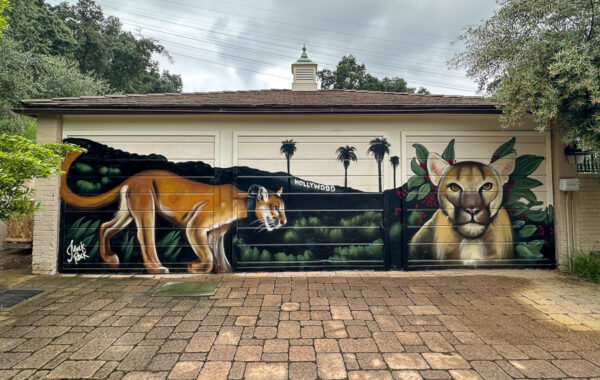
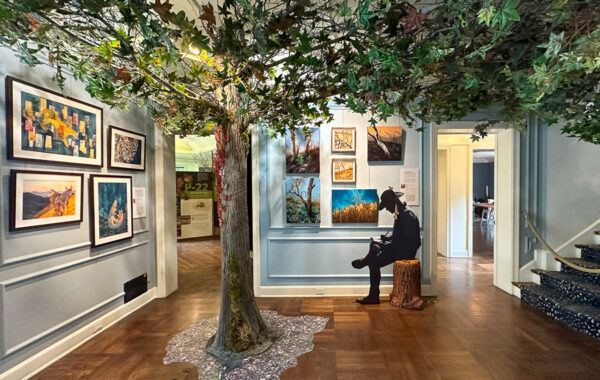
Living in a Wildlife Corridor was presented by the Arroyos & Foothills Conservancy and invited art enthusiasts and nature lovers alike to immerse themselves in a world of stunning visuals and artistic expression inspired by the vibrant local wildlife.
The exhibit showcased up-close breathtaking photography capturing the intricate details of native fauna, accompanied by striking life-size sculptures that bring these creatures to life. Complementing the photography and sculptures was a curated selection of original paintings, prints, and drawings that celebrate the beauty and diversity of the wildlife found within Descanso Gardens’ extensive landscape.
Displays in this impressive exhibition also included artwork and traditional knowledge shared by Tongva Culture Bearers, the latest scientific and research expertise from conservationists, and insights into the specific challenges and opportunities around conservation in the greater Los Angeles area.
Visitors learned about local initiatives to conserve land and help wildlife and walked away with concrete actions and steps they can take to protect and preserve the natural world surrounding us. Living in a Wildlife Corridor was an awe-inspiring experience, offering a unique perspective on the natural wonders that surround us.
Living in a Wildlife Corridor was exhibited at the Boddy House and featured a mural on the Sturt Haaga Gallery wall.
Featured artists
Joe Rohde, Johanna Turner, Dan Potter, Miguel Ordeñana, Robert Martinez, Smrithi Krishnan, Nicholas Hess, Roy Dunn, Denis Callet, and Rachel-Ann Arias.
SHIKI: The Four Seasons in Japanese Art
February 18–May 29, 2023
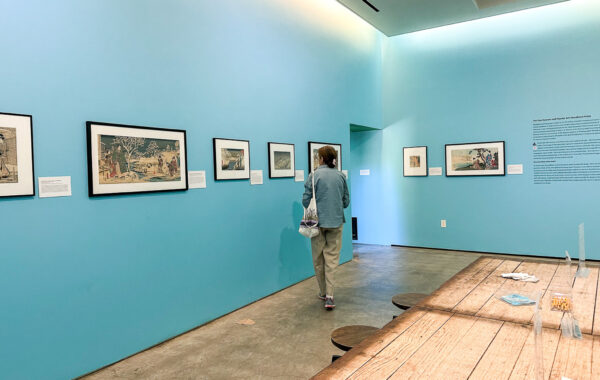
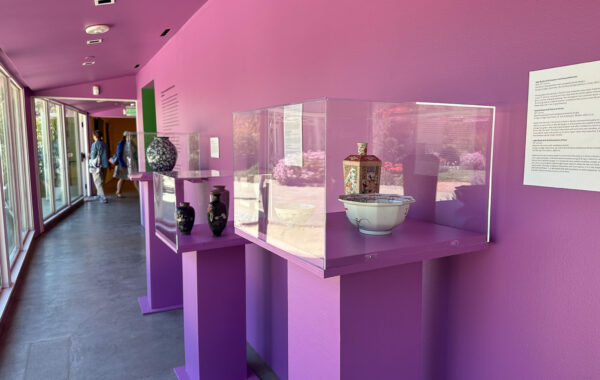
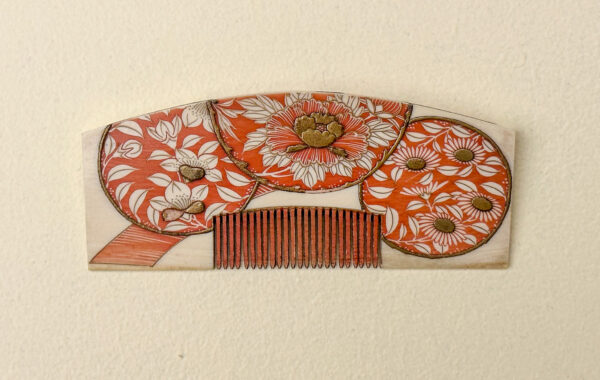
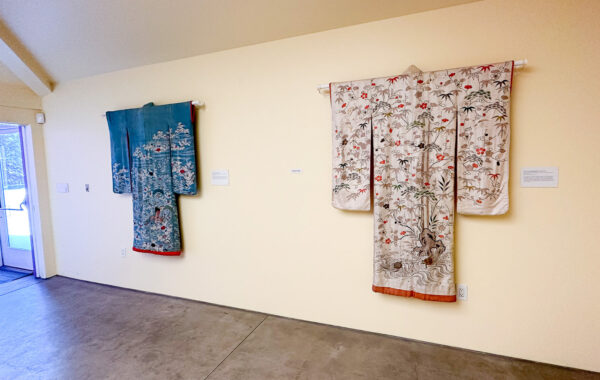
Over centuries, a rich literary and visual vocabulary representing the seasons evolved from the aesthetic sensibilities of the Japanese people. The aesthetic values of Japan reach beyond philosophical ideas about art and beauty, they are embraced as a way of life, centered around the concept of living in harmony with nature. As a result, the seasonal motifs found their way into everyday life, embellishing clothing, accessories, and other objects used daily.
SHIKI: The Four Seasons in Japanese Art from the Scripps College collection in Claremont featured common seasonal motifs, from a bowl with wisteria blossoms gracing the interior to maple leaves embellishing a kimono. Natural elements like these are frequently stylized to heighten the ornamental effect when used as decorative motifs. This modest, refined simplicity is regarded as the highest form of beauty.
Along with poetry and artifacts, more traditional forms of art were included in the SHIKI exhibit. Woodblock prints and hand-painted folding screens brought the natural world into the home, too, with the images chosen to match the seasons. While the upper classes rarely experienced the natural world firsthand, artfully painted and gold-leafed screens allowed them to enjoy a cool river landscape in the heat of summer.
Printed works known as ukiyo-e, or “pictures of the floating world,” made the work of famous artists affordable and therefore popular with the general population. These printed images also helped spread the visual vocabulary among common people. Not only do the motifs represent seasons, as the lotus signifies summer, but they also include emotional characteristics relating to the natural cycle. A symbol of purity, the lotus is revered for its ability to rise from muddy waters and bloom into a beautiful flower. It also symbolizes finding meaning in life, from the Buddhist tradition.
SHIKI: The Four Seasons in Japanese Art was funded in part by Heather and Paul Haaga.
About the curator
SHIKI: The Four Seasons in Japanese Art was curated by Meher McArthur. Ms. McArthur is an Asian art historian specializing in Japanese art. She was Curator of East Asian Art at Pacific Asia Museum, Pasadena, CA, Creative Director for the Storrier Stearns Japanese Garden, Pasadena, Academic Curator for Scripps College, Claremont, and Art and Cultural Director for JAPAN HOUSE Los Angeles.
